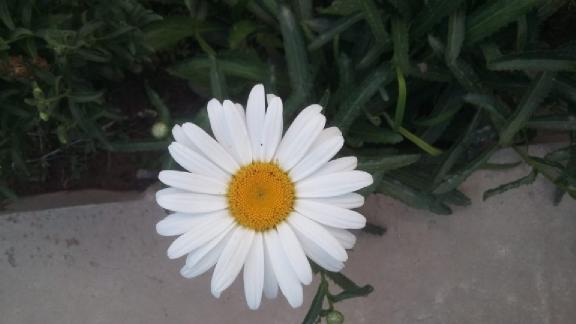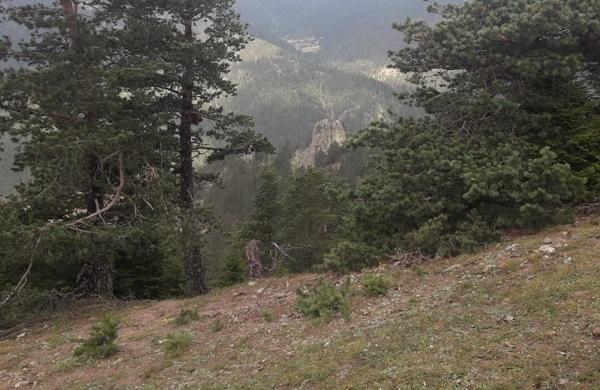In the continent of North America, which has a wide area, a wide variety of climate types. Ruling of various types of climates The following factors affect: From the Arctic Region in the north-south direction of the continent Extending to the Equatorial Region, In the west, the Cordillera system, in the east the ppalachian prevent its effects from passing into the interior, On the one hand, the absence of any obstacles in the north and south Cold winds from the Arctic Ocean easy to get inside, on the other hand, the hot south along the Mississippi and the valleys of its tributaries allows progress. The Great Lakes are humid in their region and in their immediate surroundings. creates an environment and temperature, precipitation conditions creates changes.
North American Countries Vegetation
Canada; 48-49 from the Arctic region in the north of the North American continent. north parallel extending to their flats; In terms of area, it is the largest in the world after Russia. It is the second country. Decentralized, constitutional constitution consisting of 10 states and 3 territories a monarchy, established by Confederate law in 1867 is a federation. Its population is around 37 million. 7.8% of its land is suitable for agriculture and 10% of the workforce is in this area. is working. Various products in the country ranging from wheat, tobacco, vegetables and fruit is grown. Canada is one of the top wheat growing countries. Wheat It is the second largest exporter in the world after the USA. Other grown products include barley, oats, rye. Canada, the countries that grow the most apples between. In addition to apples, the importance of fruits such as pears, peaches and plums are also important. What are the five vegetation regions of North America?

United States of America; In the central part of the North American continent, Canada from the north and Mexico from the south are among. From the Atlantic Ocean in the east to the Pacific Ocean in the west It is 4,500 km wide. United States of America, including Alaska and Hawaii States have a surface area of more than 9 million square kilometers. In Hawaii, Big Located in the Ocean, 3,200 kilometers from the continental United States away. Alaska is the largest of the 50 states by area (1,717,854 square kilometers). is the one. Texas, located in the south of the country, is second in terms of surface area (696,241 km2). What are the four vegetation regions in North America? >>
What is the Vegetation of the North American Plant Country?
Most of the meadows and grasses in the interior are of the species brought from Europe. The original species could not resist being used as animal pasture or used by modern humanity and imported seeds. Only some of the natural vegetation remained in the mountainous west and north; logging and the spread of settlements continue to reduce these little remains.
However, despite all the changes created by man, areas that were once forests still remain covered with trees, and meadows still have a small number of trees. Although this situation is “man-made”, it also reflects the importance of the relationship between vegetation and climate. The long-standing “Moist” or “Arid America” discourse can be put forward as a generalization, and vegetation can be divided into three major categories: forest, grassland and shrubs. The northernmost tundra, on the other hand, falls outside of these three groups, as it is very cold and very arid, and is not suitable for plant growth; here are lichens etc. is in a dominant position.

Vegetation in places with more than 50 cm of precipitation per year consists of forest, and in drier climates it consists of meadows and shrubs. Forests east of North America’s 100th longitude including the Pacific coast and high inland mountains create large transitional areas with latitude. While coniferous forests dominate northern Canada, they become mixed with broadleaf as one descends to the northeast of the United States. Further southeast, broad-leaved vegetation dominates, but extensive pine forest areas along the drier sandy soils of the Gulf-Atlantic Coastal Plain are the exception. Ohio, the lower Mississippi valleys, and much of the Lake District are covered with broadleaf forests.
Grasslands cover most of the interior, including all of the Great Plains from Texas and New Mexico to central Alberta and Saskatchewan. The lack of precipitation makes it difficult to grow trees here. Its thickets are seen in drier areas. For example, in Southern California, which has a Mediterranean climate, dwarf trees and shrubs (maquis called chapparal) dominate the geographical appearance. The only areas that are true deserts (with less than 25 cm of precipitation per year) are southeastern California and adjacent southwestern Arizona; cactus and other leathery shrubs are dominant here. In South Florida, the only tropical climate zone in North America, this climate creates a savanna-like vegetation with extensive coastal marshes such as the Everglades.
